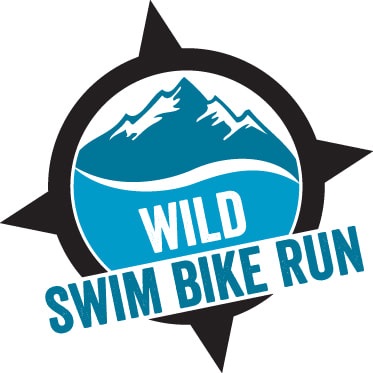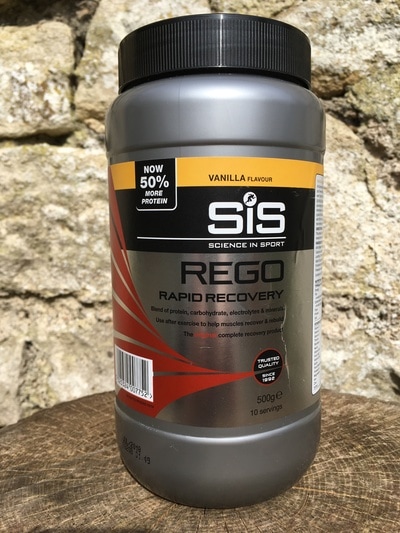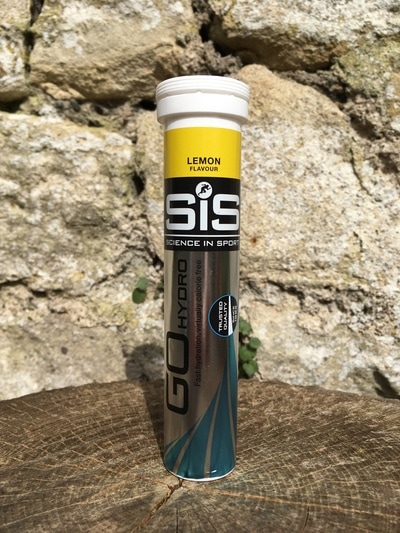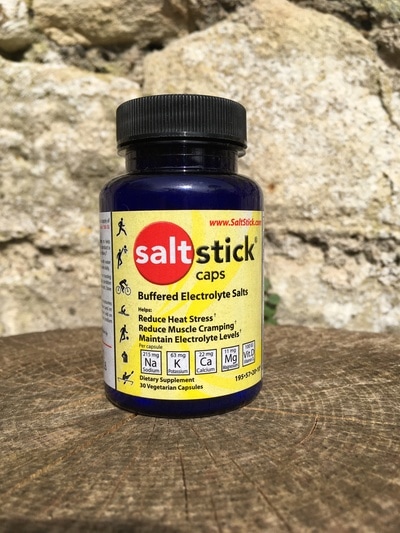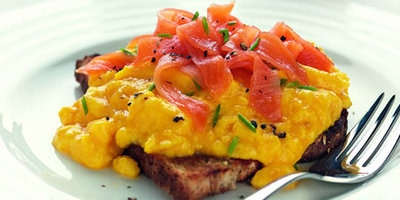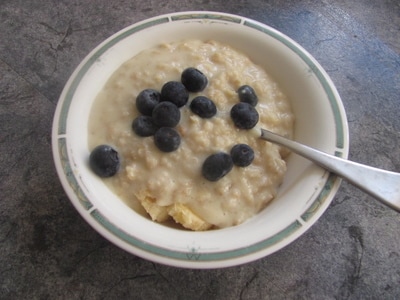Triathlon Multisport Nutrition
There are lots of clever products out there supporting increased athletic function and performance; manufacturers tell us they are vital to success and podium status. However, cut through the marketing noise and you will find that finishing an endurance event simply requires water, carbohydrate and salt.
You body stores carbohydrate as glycogen in your muscles and liver, this is converted to glucose, released into your bloodstream as fuel for your brain and muscles when you exercise. Therefore during endurance events it is critical that we replace and sustain carbohydrates in our system to maintain movement.
Nutrition Plan
Carbohydrate intake is dependent but not limited to type of exercise, gender, height, weight and body type. Therefore developing a nutrition plan that works for you is critical for a successful and comfortable event.
300-400 calories per hour is an approximate baseline to start testing and developing your own nutrition plan for an Ironman distance triathlon. Keep a simple tabulated record of your nutrition plan as it evolves, this will allow you to experiment with different nutrition types more effectively.
The calorie content of food is displayed on packaged foods and information on other food items like bananas is available online. You can use weight (grams) to calculate the amount of carbohydrate that you require, we use calories for the sake of simplicity.
Carbohydrate
An important consideration when using sport carbohydrate products is your ability to digest them. If you find them difficult to chew, swallow, digest or any other issue you should look for alternatives. Anything stopping or slowing your carbohydrate absorption rate will contribute to depletion of body glycogen levels and blood sugar reducing your ability to perform.
A strategy that works well is a combination of carbohydrate gels, bars and drinks with water and fruit (mainly bananas). To get the successful refuelling strategy for you test and prove a variety of commercial and homemade products until you find a range of items that work for under a range of conditions!!!!
“Setting up your bike and run kit to making refuelling easy is just as important as your nutrition plan. Set up a logical and simple system allowing you to resupply quickly at aid stations and refuel whilst moving without effecting performance”
Protein
You don’t need protein to fuel your race but you do need it to maintain and repair your muscles during recovery. Small amounts of protein could be included in your nutrition plan in the closing stages of the race but it is essential that you take protein on board immediately after the race to support the recovery process.
If you are racing in ultra endurance events including protein into your diet is important to avoid unnecessary muscle damage and extending your recovery period, ultra endurance events (16-24+ hours) take a heavy toll on your body and require well researched nutrition and recovery plans.
Salt Tablets
If you sweat heavily or you’re racing in hot or humid climate you need to understand if cramp will affect you. Do not underestimate the debilitating affects of cramp; unfortunately even for those who have never suffered from cramp there is a line in the sand and until you cross it you will not know to what level it will affect you.
Salt tablets/capsules are a highly effective means of mitigating the risk of cramp. Capsuled products provide a highly adaptable method of introducing salt into your nutrition plan. In powdered form they can be pre-mixed with gels, drinks or simply taking in their tablet/capsule format.
You body stores carbohydrate as glycogen in your muscles and liver, this is converted to glucose, released into your bloodstream as fuel for your brain and muscles when you exercise. Therefore during endurance events it is critical that we replace and sustain carbohydrates in our system to maintain movement.
Nutrition Plan
Carbohydrate intake is dependent but not limited to type of exercise, gender, height, weight and body type. Therefore developing a nutrition plan that works for you is critical for a successful and comfortable event.
300-400 calories per hour is an approximate baseline to start testing and developing your own nutrition plan for an Ironman distance triathlon. Keep a simple tabulated record of your nutrition plan as it evolves, this will allow you to experiment with different nutrition types more effectively.
The calorie content of food is displayed on packaged foods and information on other food items like bananas is available online. You can use weight (grams) to calculate the amount of carbohydrate that you require, we use calories for the sake of simplicity.
Carbohydrate
An important consideration when using sport carbohydrate products is your ability to digest them. If you find them difficult to chew, swallow, digest or any other issue you should look for alternatives. Anything stopping or slowing your carbohydrate absorption rate will contribute to depletion of body glycogen levels and blood sugar reducing your ability to perform.
A strategy that works well is a combination of carbohydrate gels, bars and drinks with water and fruit (mainly bananas). To get the successful refuelling strategy for you test and prove a variety of commercial and homemade products until you find a range of items that work for under a range of conditions!!!!
- Energy Gels – Gels average between 90-110 calories per sachet, mostly packaged in sachets with some boasting beneficial delivery (opening?!) systems. Gels seems to throw up more digestive problems so it is important test different brands for suitability. Some gels have a very thick consistency somewhere between thick peanut butter and honey requiring water to wash/dissolve sticky residue left in your mouth. For the clean freaks gels are sticky and will inevitably lead to creating a sticky mess on your hands, handlebars, clothing and equipment driving you insane. A cleaner solution to this problem is to decant the gels into a soft flask or sports bottle but this only works if you are going to use at least 3 gels. When using the sports bottle you will find towards the end you have gel in the bottle that won’t come out, add some water to the bottle followed by a quick shake… problem resolved!
- Energy/Caffeine Gels -Marketing increased mental and physical reaction times, our less scientific assessment being you get the same lift a cup of strong black provides but also a warning! Use with caution and consider timing as for some to many (more than one) can lead to adverse affects including headaches and nausea.
- Energy Bars – These are aimed at the bike leg as the lack of moisture can be difficult to ingest during the run due to a higher intensity work rate resulting in reduced blood flow to the stomach. Most deliver a bigger carbohydrate load per gram than gels as long as you can stomach them. Many struggle with solids during the bike and have to be selective as to which solids they use. Another product that should be tried and tested for suitability. Bars with protein are sold on the basis that 3-4+ hours on the bike is a long time to go without protein to support muscular repair, it certainly can’t hurt as long as your stomach can process without adverse affect.
- Carbohydrate/Electrolyte Powders – Carbohydrate powders are a flexible and excellent tool for refuelling. Products are widely available with electrolytes aiding the replacement of salts and mineral lost through sweat mitigating the risk of cramp. Depending on your preference and nutrition plan you can adapt the concentration of the drink, either in the bottle or by taking alternate mouthfuls from your energy and water bottles.
“Setting up your bike and run kit to making refuelling easy is just as important as your nutrition plan. Set up a logical and simple system allowing you to resupply quickly at aid stations and refuel whilst moving without effecting performance”
- Bananas - Packed with carbohydrate, vitamins, minerals and dietary fibre! The fruit designed for endurance athletes, if you can handle eating them yellow with some brown spots you will find them sweeter and easier to digest. You will also get more bang for your energy buck as when green they have a higher starch content, during ripening the starch converts to simple sugars giving you a quicker hit!
- Fruit – Including fresh fruit in your race nutrition plan comes down to personal preference. Some prefer to break up the taste of commercial sports nutritional products with fresh fruit, some enjoy and have no issues with taking on fruit and others try to minimise the use of processed products through the use of natural foods. Through experience there is nothing more refreshing during the run leg of an Ironman distance race there is nothing more refreshing than a slice of water melon.
Protein
You don’t need protein to fuel your race but you do need it to maintain and repair your muscles during recovery. Small amounts of protein could be included in your nutrition plan in the closing stages of the race but it is essential that you take protein on board immediately after the race to support the recovery process.
If you are racing in ultra endurance events including protein into your diet is important to avoid unnecessary muscle damage and extending your recovery period, ultra endurance events (16-24+ hours) take a heavy toll on your body and require well researched nutrition and recovery plans.
Salt Tablets
If you sweat heavily or you’re racing in hot or humid climate you need to understand if cramp will affect you. Do not underestimate the debilitating affects of cramp; unfortunately even for those who have never suffered from cramp there is a line in the sand and until you cross it you will not know to what level it will affect you.
Salt tablets/capsules are a highly effective means of mitigating the risk of cramp. Capsuled products provide a highly adaptable method of introducing salt into your nutrition plan. In powdered form they can be pre-mixed with gels, drinks or simply taking in their tablet/capsule format.
Hydration
Prior, during and after the event you should be constantly sipping water. Hydration is key to ensuring your physiological systems operate at the optimal rate allowing you to perform at your best. The colour of your urine should be clear in the days and morning prior to the race, ideally it should always be clear!
Carbo Loading
You will hear a lot of theories on carbo loading prior to an event or race. The idea is that you ensure your body is holding its maximum amount of glycogen prior to the race starting, the average person will hold about 500g of glycogen in their liver and muscles. The simplest approach; consume carb rich foods in the days prior to the race that you enjoy and don’t adversely affect your stomach or bowel movements (no need to positively visualise that part of the race) Whatever you eat ensure that it is easy to clear through your system the morning before the race.
Race Breakfast and Morning
Most triathlon events begin with an early morning, a bit of nervous energy and a lack of appetite. Your race day nutrition plan starts as soon as your eyes open, if you are a coffee or tea addict start with your morning fix. This will also help another important process ‘evacuating your bowels’ (no easy way of saying that!), if you can get your daily business done in the morning it will avoid time wasted during your pre-race administration or worse during the race costing you valuable time.
Breakfast should be something easy to prepare, digest and carb rich. Porridge, muesli, scrambled eggs on toast work well. This meal will set you up for the rest of the day, experiment to find what works for you and won’t make you uncomfortable during the swim. Try and finish breakfast at least 2 hours before the start of the swim to allow time for digestion.
Prior, during and after the event you should be constantly sipping water. Hydration is key to ensuring your physiological systems operate at the optimal rate allowing you to perform at your best. The colour of your urine should be clear in the days and morning prior to the race, ideally it should always be clear!
Carbo Loading
You will hear a lot of theories on carbo loading prior to an event or race. The idea is that you ensure your body is holding its maximum amount of glycogen prior to the race starting, the average person will hold about 500g of glycogen in their liver and muscles. The simplest approach; consume carb rich foods in the days prior to the race that you enjoy and don’t adversely affect your stomach or bowel movements (no need to positively visualise that part of the race) Whatever you eat ensure that it is easy to clear through your system the morning before the race.
Race Breakfast and Morning
Most triathlon events begin with an early morning, a bit of nervous energy and a lack of appetite. Your race day nutrition plan starts as soon as your eyes open, if you are a coffee or tea addict start with your morning fix. This will also help another important process ‘evacuating your bowels’ (no easy way of saying that!), if you can get your daily business done in the morning it will avoid time wasted during your pre-race administration or worse during the race costing you valuable time.
Breakfast should be something easy to prepare, digest and carb rich. Porridge, muesli, scrambled eggs on toast work well. This meal will set you up for the rest of the day, experiment to find what works for you and won’t make you uncomfortable during the swim. Try and finish breakfast at least 2 hours before the start of the swim to allow time for digestion.
Pre-Swim
Keep sipping fluids, water or an energy drink and in 10-15 minutes prior to your swim start take on a gel if you can. You will be in the water for at least an hour if you are doing an ironman distance event which is a long time without food, therefore important to pre-load if your stomach can take it.
Post Swim
As you come out of the water you will be feeling slightly disorientated and possibly cold. Compose your self and concentrate on executing a methodical transition onto the bike. Once you have sorted yourself on the bike take something on-board as soon as possible. You have been swimming for a while without taking in any fuel and now need to engage a constant pipeline of fuel for your engine!
Bike
Apply the 15 minute rule to ensure that you are maintaining a constant pipeline of fluids and energy for your body. Its good practise to sip fluids constantly especially if the weather is hot and or dry. Using a Time Trial style bottle makes hydrating simpler as you don’t need to move your head or body to sip fluids. In the last 40km of the bike leg start to think about the run, take on some solids whilst you have the time, increase your energy intake to cover time through transition and settling into the run and assess the requirement for salt tablets.
Run
This is where a lot of mistakes are made. The nutrition for the run should have started in the last section of the bike. As soon as you have found your tempo (5-10 minutes) it is important to open the energy and hydration pipeline for your body. If you are struggling to hold things down try taking straight water for 10 minutes before restarting on carbohydrate drinks or gels. When you are 10km out of the finish on a full ironman start to assess what you need to finish the race, you maybe able to gas it from 6-8km out just on fluids or you may need fuel up to the last aid stand….
Post Race
Get stuck into anything that your heart desires, you have earned it. Key things to get right are fluids, electrolytes and protein. Drink lots, sports electrolyte drinks are an easy solution and fire into a steak, tuna or soy burger!
In the days following the race keep the fluids up, including the electrolyte drinks and satisfy any craving that you have. You have put your body through a lot of punishment and your body will be investing anything you put into your body into repair.
Keep sipping fluids, water or an energy drink and in 10-15 minutes prior to your swim start take on a gel if you can. You will be in the water for at least an hour if you are doing an ironman distance event which is a long time without food, therefore important to pre-load if your stomach can take it.
Post Swim
As you come out of the water you will be feeling slightly disorientated and possibly cold. Compose your self and concentrate on executing a methodical transition onto the bike. Once you have sorted yourself on the bike take something on-board as soon as possible. You have been swimming for a while without taking in any fuel and now need to engage a constant pipeline of fuel for your engine!
Bike
Apply the 15 minute rule to ensure that you are maintaining a constant pipeline of fluids and energy for your body. Its good practise to sip fluids constantly especially if the weather is hot and or dry. Using a Time Trial style bottle makes hydrating simpler as you don’t need to move your head or body to sip fluids. In the last 40km of the bike leg start to think about the run, take on some solids whilst you have the time, increase your energy intake to cover time through transition and settling into the run and assess the requirement for salt tablets.
Run
This is where a lot of mistakes are made. The nutrition for the run should have started in the last section of the bike. As soon as you have found your tempo (5-10 minutes) it is important to open the energy and hydration pipeline for your body. If you are struggling to hold things down try taking straight water for 10 minutes before restarting on carbohydrate drinks or gels. When you are 10km out of the finish on a full ironman start to assess what you need to finish the race, you maybe able to gas it from 6-8km out just on fluids or you may need fuel up to the last aid stand….
Post Race
Get stuck into anything that your heart desires, you have earned it. Key things to get right are fluids, electrolytes and protein. Drink lots, sports electrolyte drinks are an easy solution and fire into a steak, tuna or soy burger!
In the days following the race keep the fluids up, including the electrolyte drinks and satisfy any craving that you have. You have put your body through a lot of punishment and your body will be investing anything you put into your body into repair.
